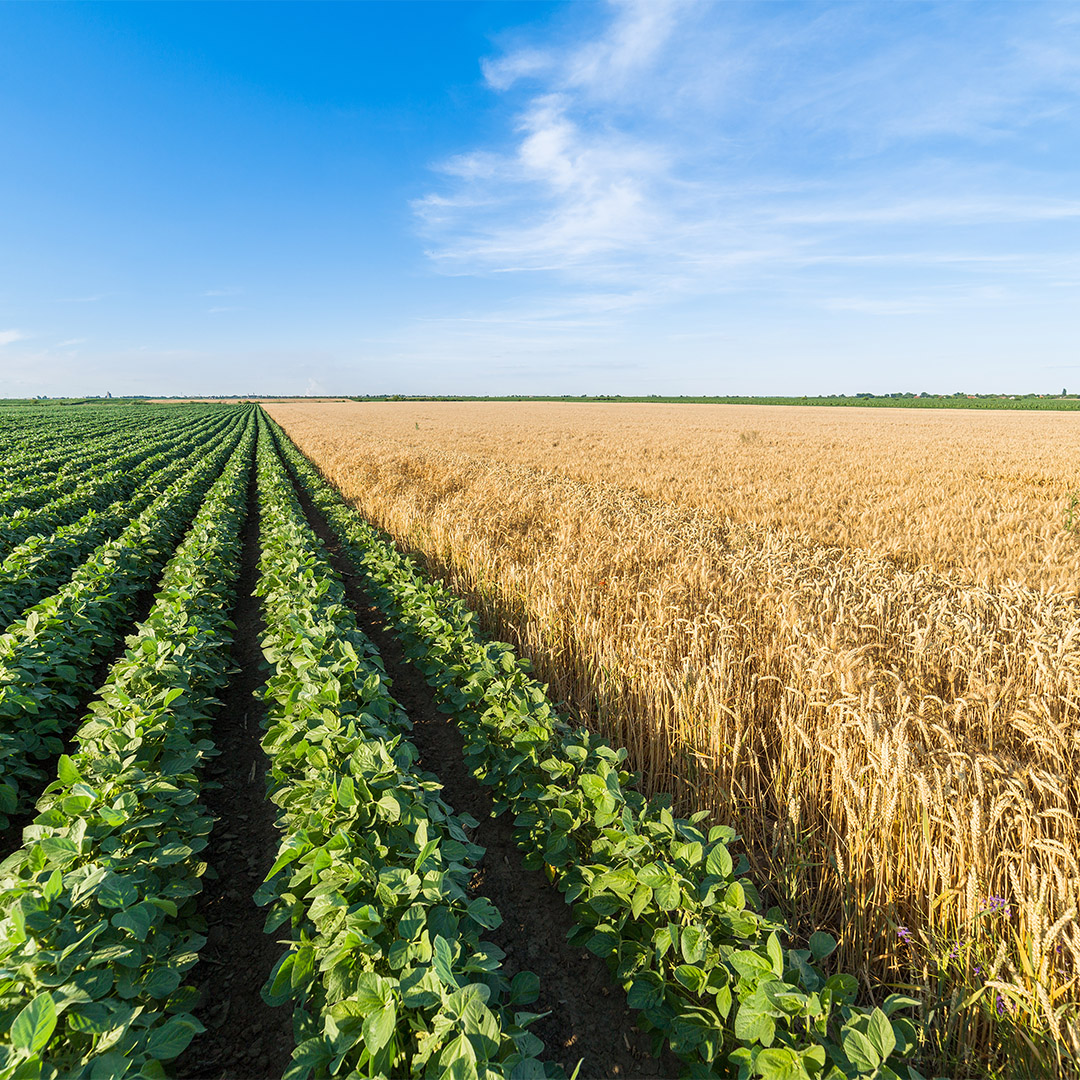Winnipeg, Manitoba, Canada
February 24, 2023

Many articles about organic farming focus on the consumer. Consumers are demanding healthier options; consumers want traceable food that is good for the planet. But what about the farmers? Soybeans and wheat are two of the biggest cash crops in North America. If organic famers can compete in those markets, then perhaps organic farming is becoming more than a niche market. As a side note corn is absent from this article as we could not find any evidence of organic corn being competitive with conventional at this time (3).
Here are three reasons why we believe that organic wheat and soybeans can continue to compete with conventional:
- Organic yields in wheat and soybeans are catching up to conventional.
- Organic crop inputs hedge against high fertilizer costs.
- Organic farmers focus on the quality of their inputs.
It is no secret that organic wheat and soybeans pay a premium vs. conventional (1, 2). However, what is less well known is that organic yields are catching up to conventional.
In a recent interview with Seed World a grower out of Montana said that his wheat harvest has nearly reached parity with conventional while a story in The Western Producer quoted a farmer out of Saskatchewan getting 40 bu/ac with organic wheat (3, 4). A study out of Ontario on cover-based organic no-till soybean strip plot yields ranged from 0 to 55 bu/ac while farmdocdaily.illinois.edu calculated an average of around 35 bu/ac for organic soybeans in the US (5,6). What these numbers show is that, while there is still a lot of variability in organic yields, with the right set of tools organic soybean and wheat farmers can come close to conventional yields.
Organic farmers are not allowed to use synthetic nitrogen (N). It is one of the defining factors of organic farming. So, while the rest of the industry has had to deal with the price shocks of the post-pandemic world and the war in Ukraine, organic farmers have been uniquely positioned to be insulated from N supply chain issues.
Organic wheat farmers often spread manure on their fields to obtain the N their wheat crops need. This manure source is usually local as it does not make sense to ship manure long distances. Local manure doesn’t fluctuate much in price and can be a hedge against high fertilizer prices. Organic soybean farmers don’t need manure as they can use N fixing inoculants to obtain atmospheric N. At XiteBio our entire line of inoculants (XiteBio® SoyRhizo® XiteBio® PulseRhizo® XiteBio® OptiPlus®) is certified organic as well as being manufactured in North America. This provides a local source of N not just for organic soybean farmers but conventional soybean farmers as well.
In Brazil historically high N fertilizer prices pushed farmers towards the use of inoculants in conventional soybean farming. High quality inoculants in Brazil are estimated to be able to fix as much as 100 per cent of the N needed and save farmers $7 billion per year in synthetic fertilizer (7).
In North America adoption of inoculants has not been as widespread as in Brazil. In the past the varying quality of certain products allowed bad players to taint the reputation of an entire industry. Biologicals have become much more respected over the last few years, but more work needs to be done to further their adoption. At XiteBio we have been selling premium inoculant for over 13 years and we see the results in the loyalty of our customers. When inputs were cheap conventional farmers had the luxury of buying in large quantities and so quality was not as much of an issue. Today we see the beginnings of resource scarcity as the world population grows ever higher. Conventional and organic farmers alike will have to be picky in making the right choices on their crop inputs to ensure that they are getting the best ROI for their business. This can mean using high quality fertilizers in tandem with biological inputs, like premium inoculants and nutrient solubilizing ag-biologicals (like Xitebio® Yield+), to get more food out of less acres while allowing the land to maintain it’s fertility.
Organic farmers are pioneers that have struck out to try and find a new way to produce high yields. The success of staple crops like wheat and soybeans shows that organic is a viable methodology and one whose principles may be weaved into conventional farming out of necessity as much as out of consumer choice.
- https://www.pivotandgrow.com/resources/prices/
- https://mercaris.com/commodity_price/soybeans
- Seed World January 2023
- https://www.producer.com/news/organic-growers-now-talking-about-yield/
- https://fieldcropnews.com/2022/03/organic-no-till-soybean-production-is-it-possible-in-ontario-updated-with-2020-data/#:~:text=Strip%20trial%20sites&text=The%20difference%20in%20yield%20was,across%20two%20strip%2Dtrial%20locations.
- https://farmdocdaily.illinois.edu/2022/08/conventional-and-organic-enterprise-net-returns-3.html
- https://www.ncbi.nlm.nih.gov/pmc/articles/PMC6863340/